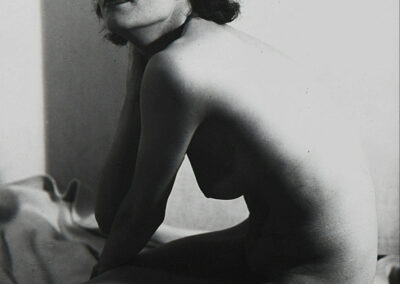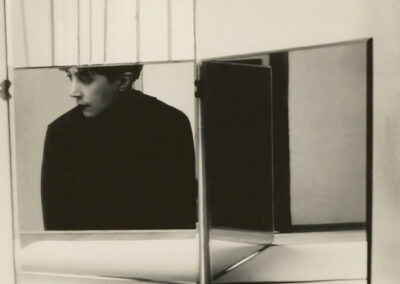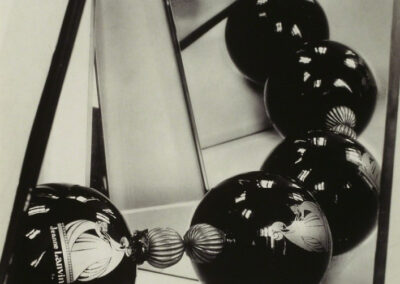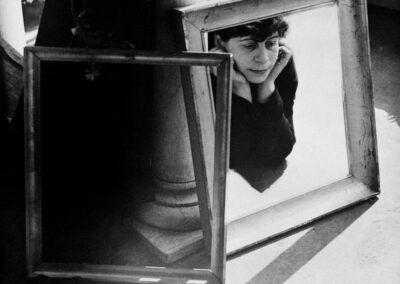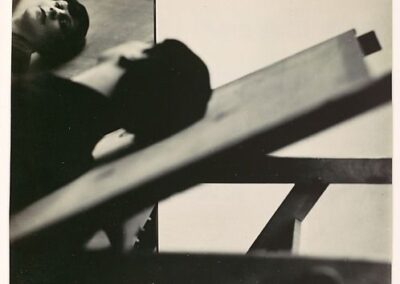Our next Artist You Need To Know is Florence Henri (1893 – 1982): Henri is one of the finest examples of the New Photography School in France (an art historical era you can learn more about here). Alongside contemporaries like Germaine Krull, Dora Maar, Claude Cahun and a number of other female photographers, Henri had a definitive influence on contemporary art, even into the 21st century.
-
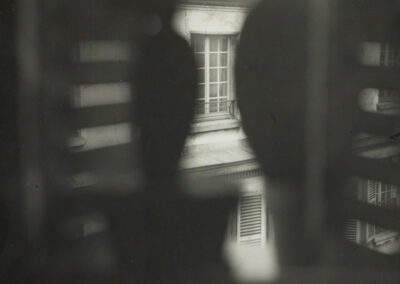
Window, 1906
-

Komposition II, 1928
-

Nu, 1930
-

Obst [Fruit], 1929
-

Composition, 1931
-

Nu pres de la Mer, 1938
“With photography, what I really want to do is compose the image, as I do in painting…The volumes, lines, shadows and light should submit to my will and say what I would like them to say. All of this under the strict control of the composition, because I do not claim to be able to explain the world or to explain my own thoughts.” (from a conversation with Attilio Colombo, as cited by Jane Pearce, MOMA Department of Photography)
-

Double Portrait, 1927-1928
-

Portrait Composition (Margarete Schall), 1928
-

Portrait Composition (Femme aux Cartes), 1930
-

Pariser Fenster, 1929
-

Nu, 1930
-

Bretagne (De ma Fenêtre, Ile de Seine), 1937
Florence Henri was initially a pianist and a painter (studying the latter at the Bauhaus in Weimar, Germany, with Paul Klee and Vasily Kandinsky, as well as Académie Moderne in Paris with Fernand Léger). Her works at this time incorporated elements of abstraction and collage and relied heavily on Cubism, Purism, and Constructivism. But she would truly find her artistic vision in photography, which she began to explore after a semester at the Bauhaus in Dessau, Germany (1927). She would study under the famous photographer László Maholy-Nagy. He offered the following about her photographs : “With Florence Henri’s photos, photographic practice enters a new phase, the scope of which would have been unimaginable before today…. Reflections and spatial relationships, superposition and intersections are just some of the areas explored from a totally new perspective and viewpoint.”
-

Self Portrait, 1928
-

Jeanne Lanvin, 1929
-

Portrait Composition, 1937
-

Structure, 1937
-

Self Portrait, 1938
-

Self-Portrait, 1938
Henri’s approach was one that straddled realism and abstraction: she experimented with mirrors in many of her works, both portraits and still lives, and space, in her images, was not always what it seemed. Photomontage, multiple exposures, and negative printing were all tools she employed, that led to her being one of the pioneers of the New Vision movement (so named by her former teacher Moholy-Nagy). Fotografie der Gegenwart (1929), Film und Foto (1929), and Das Lichtbild (1930) were all exhibitions that Henri participated in, during this period.
Henri was also a teacher (from 1929 onwards she had her own photo studio in Paris); Gisèle Freund and Lisette Model were two of her more well known students. When France fell to the Nazis, and during the resulting occupation during the Second World War, Florence Henri was often in “danger of being deemed “degenerate” by the regime. Henri returned to painting, but it was her photographs, taken mainly between 1927 and 1940, that left lasting impressions on her contemporaries and later generations alike.” (from here)
Much more of Florence Henri’s work – and more about her life and legacy – can be seen at AWARE (Archive of Women Artists & Exhibitions) and in the collection of MOMA (Museum of Modern Art). For an excellent book that places Henri historically, recognizing her role as artist, influencer and teacher, Les Femmes Photographes De La nouvelle Vision En France 1920-1940, by Christian Bouqueret, was chosen as a Library Pick in curated’s ongoing series.


